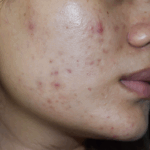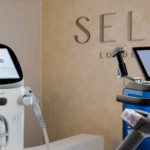
Is “X’ Treatment Good or Bad?
In the realm of cosmetic medicine and aesthetics, it is not uncommon for patients to seek an answer to this this seemingly simple question. In actual fact, the answer is a complex one. The question rarely surprises me as there is no doubt that we are overloaded by information online, often highly confusing and conflicting. Navigating what is the best treatment wherever you are in your skin journey is challenging. However, the reality of whether a treatment is good or bad is far more nuanced, with the success of interventions hinging on the delicate interplay between device quality and practitioner expertise.
The Device Parameters Dilemma: Beyond Surface-Level Assessment
Consider a scenario where two individuals undergo laser treatment for acne scarring using the same technology but manufactured by different companies. Despite the laser seemingly being the same eg. an erbium:YAG or carbon dioxide, the outcome may starkly differ. This discrepancy underscores the critical importance of device quality and build – which will no doubt dictate treatment efficacy. For instance, if the laser is poorly-made and not delivering energy at the wavelength we expect, the likelihood of substantial improvement diminishes significantly, and there may even be a risk of poor outcome such as scarring or burns. Choosing high quality devices from reputable companies is of huge importance.
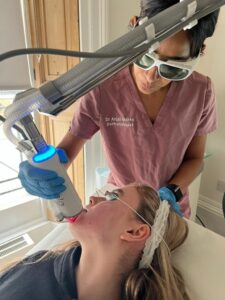
Practitioner Expertise: The Art of Precision
Whilst high-quality devices provide the foundation for aesthetic treatments, it is fundamentally the skill and expertise of the practitioner that ultimately determines success. A seasoned practitioner possesses an intricate understanding of both the device’s capabilities and the nuances of their patients’ needs. They adeptly navigate the labyrinth of device parameters, ensuring optimal settings tailored to achieve the desired outcomes. Through meticulous attention to detail and an informed approach, they elevate treatments from mere procedures to transformative experiences with excellent clinical outcomes.
The Intersection of Device Parameters and Practitioner Expertise:
The effectiveness of cosmetic treatments hinges on the synergy between device quality and practitioner expertise. Much like a painter meticulously selects the right brush strokes to bring their vision to life, a skilled practitioner carefully calibrates device settings to address specific concerns and optimize results. In the realm of laser treatments for acne scarring or skin rejuvenation, this delicate balance between depth of penetration and energy delivery can spell the difference between noticeable improvement, minimal change, or even adverse effects.
Navigating Complexity with Care and Precision:
In a field marked by constant innovation and evolving techniques, it is worthwhile recognising the intricacies of aesthetic interventions. Each treatment is a bespoke endeavour, tailored to the individual’s unique characteristics and goals. It is not a “one size fits all” but rather more about the right device for the right person for the right reason.
As patients navigate their aesthetic journey, it is essential to recognize that the effectiveness of a treatment cannot be distilled into a binary assessment of “good” or “bad.” Instead, a balanced approach, focusing on the holistic integration of device quality, practitioner expertise, and individualized patient care are key. By fostering open communication, trust, and collaboration with their practitioners, patients empower themselves to make informed decisions and actively participate in shaping their aesthetic outcomes.
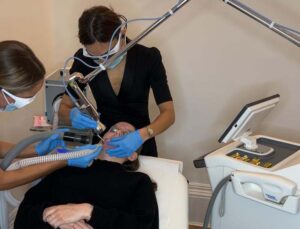
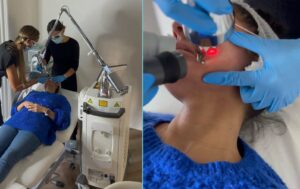
Ultimately, the goal is to move away from the notion of whether a specific device is inherently “good” or “bad” and instead emphasize the importance of selecting a good doctor who can harness the full potential of available technologies to achieve personalized and transformative results. Through this shift in perspective, patients can embark on their skin journey with confidence, knowing that they are in capable hands.
For those who see me in clinic, they will be used to my Picasso analogy…you could give Picasso a set of paints and an easel and another artist exactly the same paints and easel to work; however, what each of them will create with the same tools at their disposal will be vastly different, due to experience and expertise which simply cannot be short-cut. It is the same for any device or injectable treatment; the practitioner is just as important as the tools being used, both need to be of high quality.




